The romantic, purple-tinged peaks of the Blue Ridge Mountains have brought generations of visitors to this city in Western North Carolina. One important fan was the scion George Vanderbilt, who built America’s largest home here in the 1880s and filled it with priceless works of art. The Biltmore House is still in the family, and is unrivaled in scale and splendor, with 8,000 acres of Blue Ridge Mountain terrain to discover on the estate.
Downtown Asheville is like a time capsule, with a big quantity of early Art Deco architecture that has made it intact to the present day, all setting the scene for shopping, dining and live entertainment.
In fact, Asheville’s irresistible sense of creativity is everywhere you look, from the traditional Southern Appalachian crafts at the The Folk Art Center, to the open studios at the River Arts District, and outdoor fairs and performances at Pack Square Park.
1. Biltmore Estate
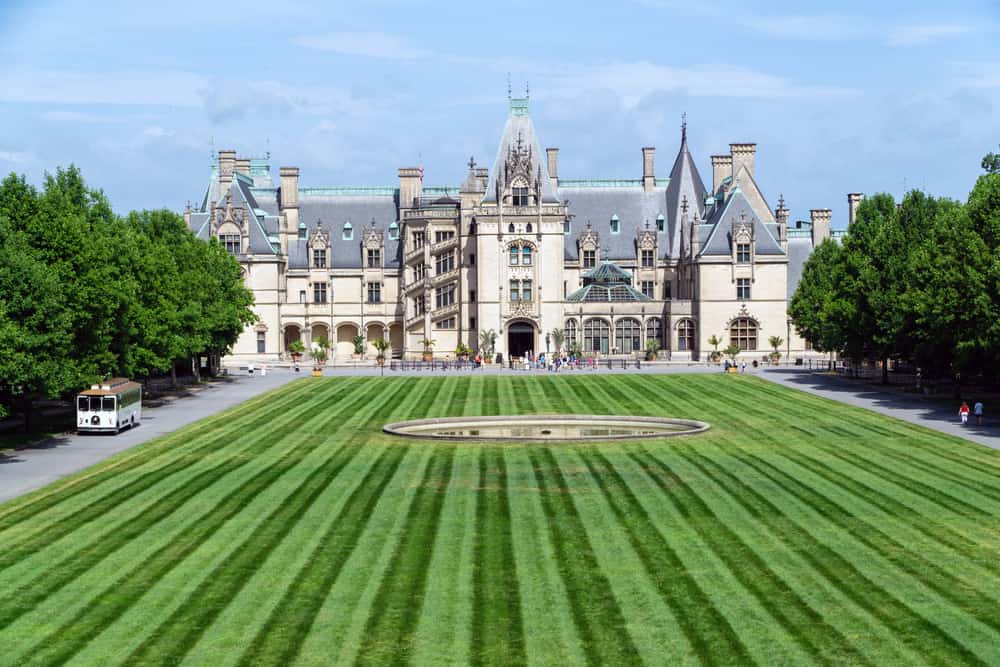 Source: Konstantin L / shutterstock
Source: Konstantin L / shutterstockGeorge Washington Vanderbilt II (1862-1914) fell for the natural beauty of the Blue Ridge Mountains, and so in 1889 he commissioned this humble abode on the French Broad River in the south of Asheville.
The Biltmore House is officially the largest privately owned house in the United States, with 250 rooms and four acres of floor space.
Every inch of this Châteauesque mansion is lavishly decorated, with tapestries, family portraits, European masterpieces, original furnishings, and intricate architectural details.
Among the major rooms are the library, with 10,000 volumes, and the Banquet Hall, with ceilings rising 70 feet.
The house is the crowning glory, but also just one element of an 8,000-acre estate. You’ll see gardens designed by Frederick Law Olmsted, a conservatory with a model railroad, natural landscapes with 22 miles of trails, and a winery with complimentary wine tasting.
2. The North Carolina Arboretum
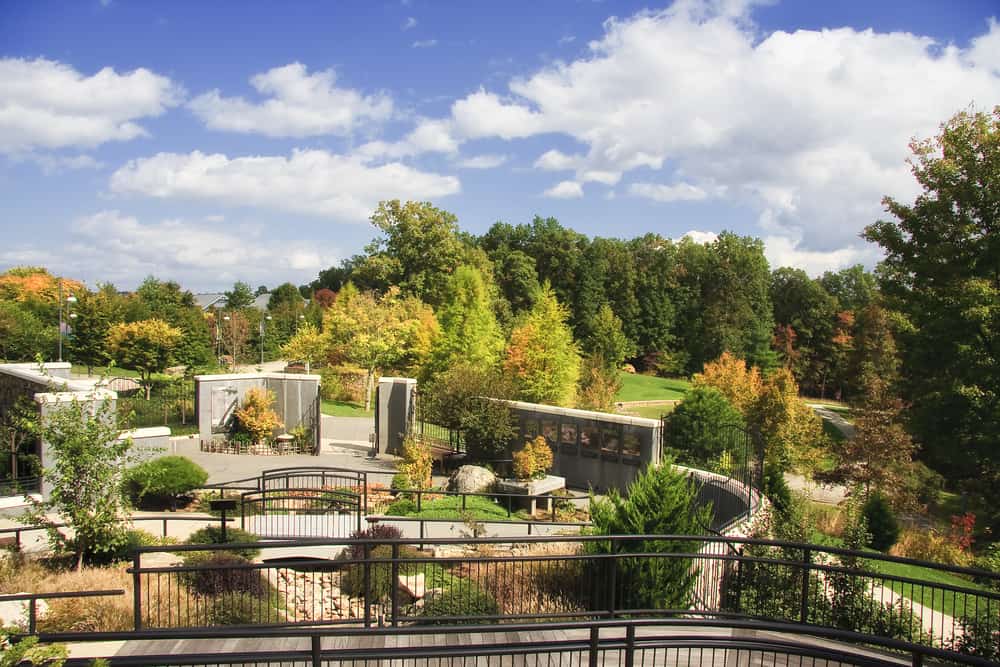 Source: Jill Lang / shutterstock
Source: Jill Lang / shutterstockThe Southern Appalachian Mountains have a degree of biodiversity that is off the charts, so Asheville had always been a perfect candidate for a major arboretum.
A century after it was mooted by Frederick Law Olmsted, this was finally planted in the late 1980s, on 434 acres off Milepost 393.6 of the Blue Ridge Parkway.
As these institutions go, the North Carolina Arboretum is relatively young, and is still being developed some 40 years later.
Still, you’ll be wowed by the size of some of the specimens, especially by the stand of metasequoias, rising to more than 100 feet, making them the tallest in the South.
There are 65 acres of cultivated gardens awaiting you, with more than 100 specimens on show in the Bonsai Collection, and uplifting spring color thanks to the National Native Azalea Collection and dozens of species of native wildflowers scattered across the property.
I definitely recommend visiting when you’re in Asheville around Christmas for the walk-through Winter Lights display, featuring a 50-foot lighted tree.
3. River Arts District (RAD)
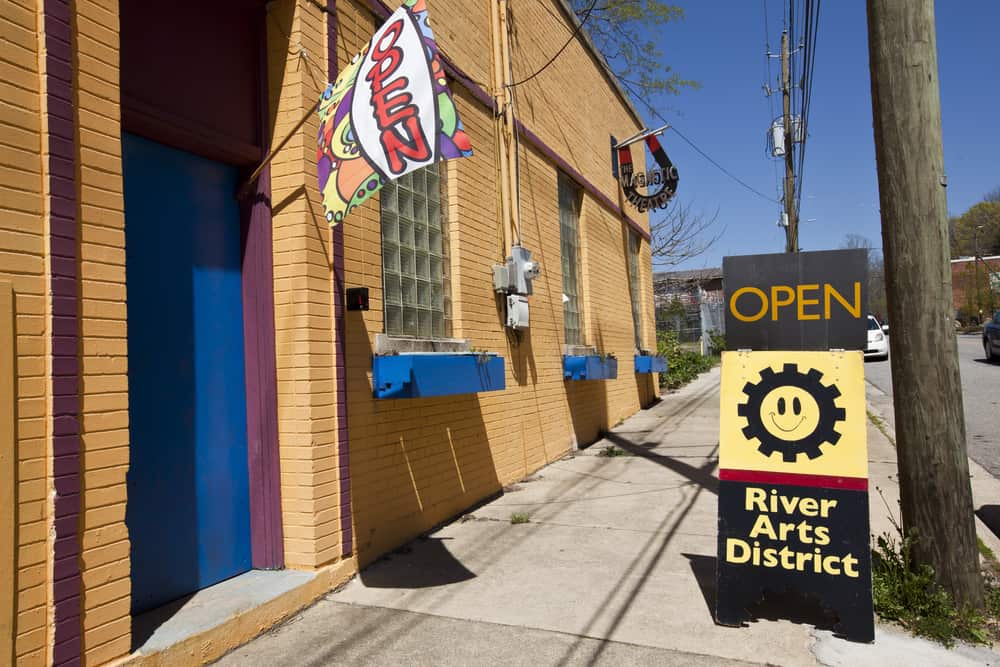 Source: aceshot1 / shutterstock
Source: aceshot1 / shutterstockStarting in the mid-19th century an open patch of land on the east side of the French Broad River became an industrial area.
This growth was accelerated when the railroad arrived in 1879, and soon the river was hugged by a line of factories, mills, and warehouses.
These hulking buildings were slowly abandoned in the 20th century, which made the area ripe for a transformation when artists came in search of cheap rents and ample space to let their ideas take flight.
Now the River Arts District is a true community, with hundreds of artists happy to show off their skills to the world.
Enticing food and drink options make this somewhere you could spend an entire trip, hopping from studio to studio and gallery to gallery. If you happen to be here on a Second Saturday the district is a mass of demonstrations, workshops, live performance and fresh culinary experiences.
4. The Folk Art Center
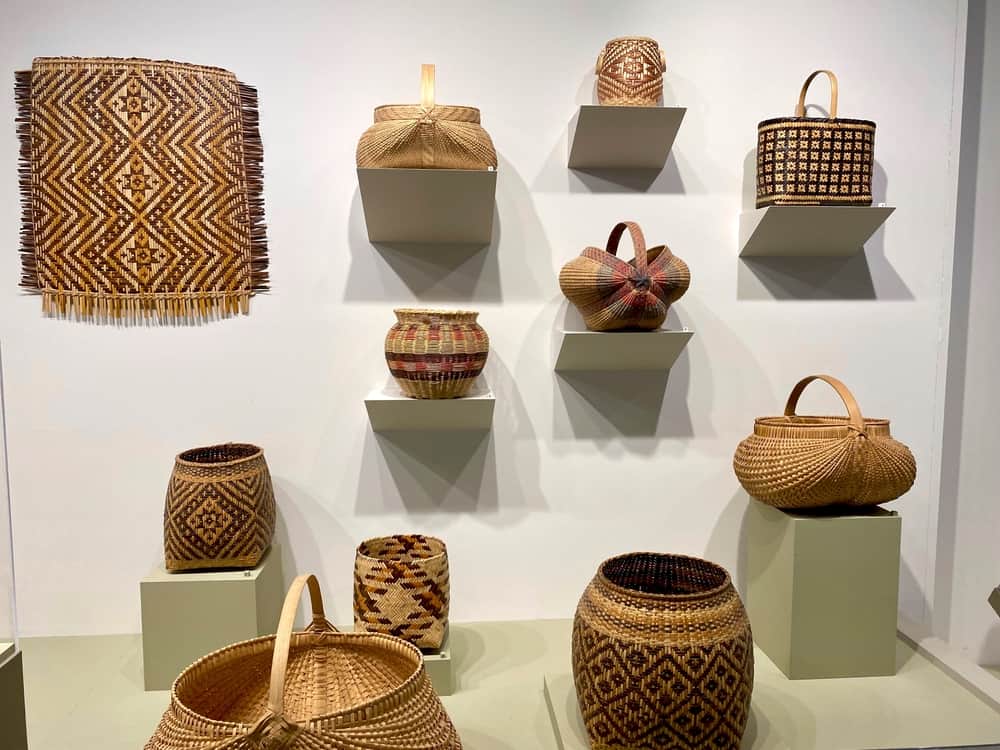 Source: EWY Media / shutterstock
Source: EWY Media / shutterstockEight miles from downtown Asheville at Milepost 382 on the Blue Ridge Parkway, the Folk Art Center is dedicated to Southern Appalachian craft and culture, both traditional and contemporary.
This is the home of the Southern Highland Craft Guild, with three galleries displaying examples of workmanship passed down the generations to the present day.
To see these skills in action you can check out daily craft demonstrations in the lobby from March to December.
And if you want to pick out a piece to call your own, the center is home to the Allanstand Craft Shop, established in 1895 and officially the oldest craft shop in America, with work by more than 400 members of the Southern Highland Craft Guild.
The center has its own nature trail, while Milepost 382 is also an access point on North Carolina’s 1,200-mile Mountains-to-Sea trail.
5. Biltmore Village
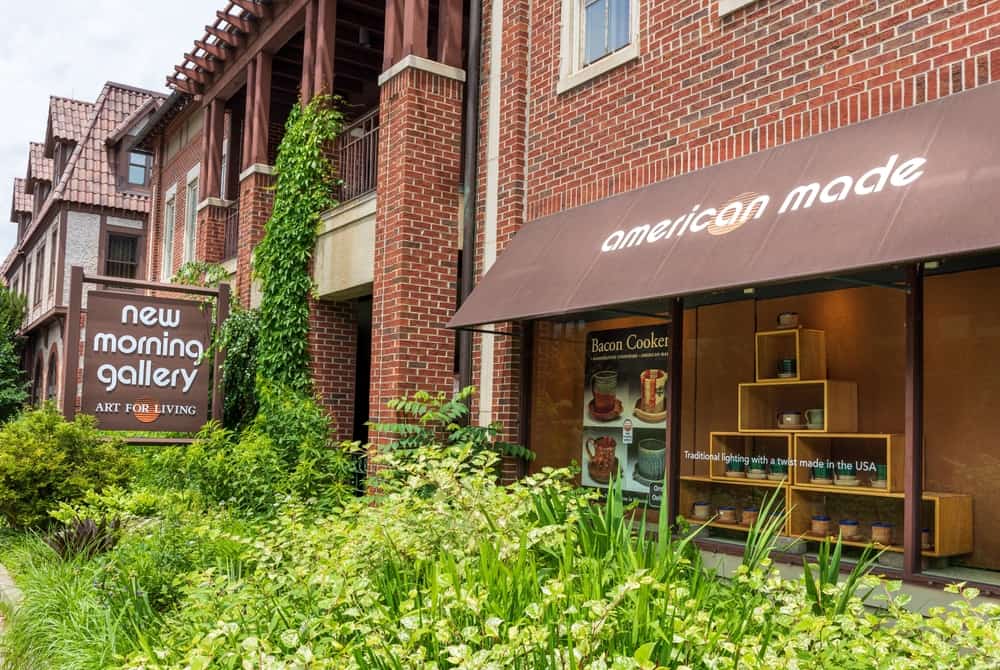 Source: Nolichuckyjake / shutterstock
Source: Nolichuckyjake / shutterstockNear the main entrance to the Biltmore Estate, George Vanderbilt built this idyllic village in the 1890s as a company town for the estate’s small army of workers.
With Tudor-style half-timbering, Biltmore Village was designed to resemble an English country village, complete with a parish church, the Cathedral of All Souls.
Now the village’s cottages and leafy cobblestone streets are the canvas for a quaint commercial district, with a mix of small businesses and national brands.
You can hunt for antiques, browse galleries, try some local craft beer, and try to choose from a menu of cuisines.
6. Downtown Asheville
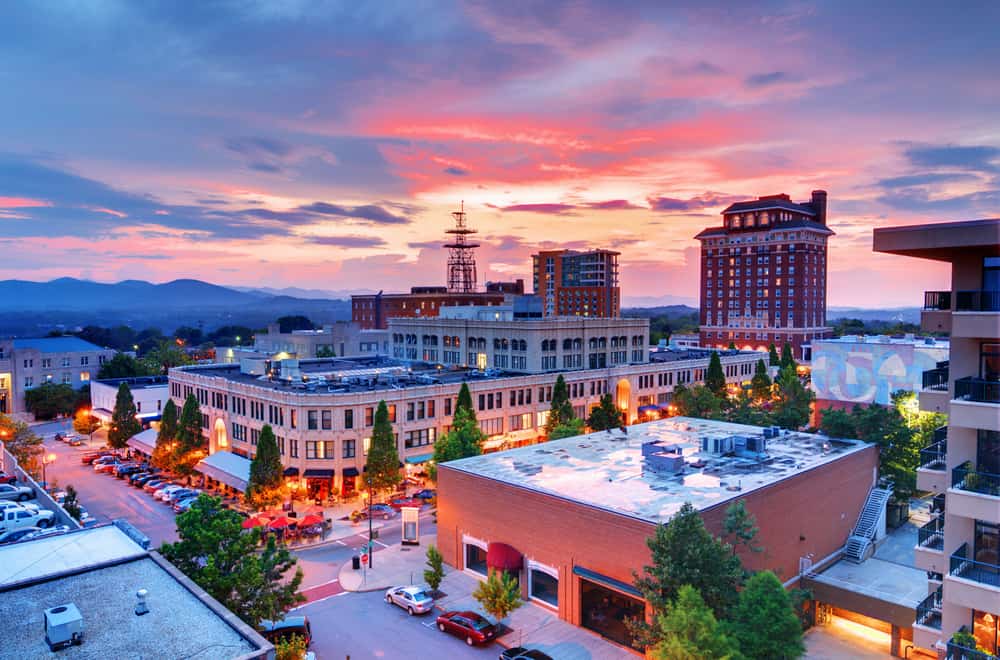 Source: Sean Pavone / shutterstock
Source: Sean Pavone / shutterstockIn a curious twist of fate, a long period of hardship has helped make downtown Asheville so enthralling. The Great Depression was cruel to the city, which elected to pay off its debts over the course of more than half a century.
The upside is that very little development happened, which meant that one of America’s finest and largest arrays of Art Deco buildings has made it to the 21st century intact.
At a time when downtown Asheville is on top of its game, that exquisite architecture is allied with upscale shopping at more than 200 locally owned stores and boutiques.
You’ve got dining for all tastes, contemporary art and culture, and so many events that there will always be something happening when you’re in town. Pack Square Park, at the foot of several Art Deco wonders, is where many of the free festivals and events take place.
Be sure to also check out my guide on Downtown Asheville!
7. Thomas Wolfe Memorial
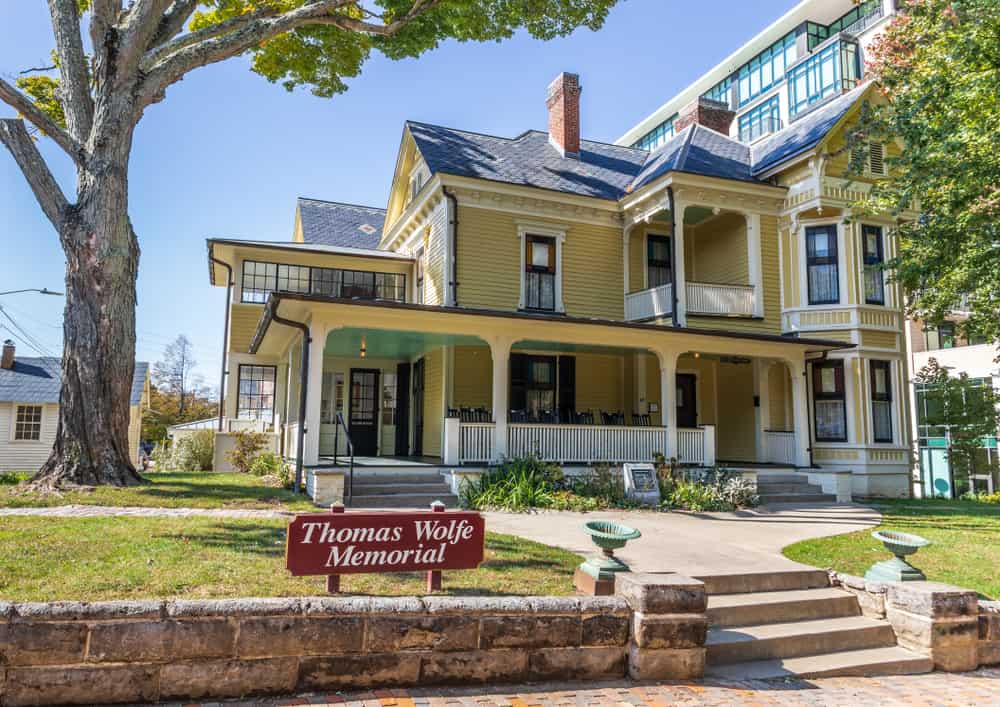 Source: Nolichuckyjake / shutterstock
Source: Nolichuckyjake / shutterstockThe novelist Thomas Wolfe (1900-1938), one of the great American literary figures of the 20th century, was born and grew up in Asheville.
His childhood home downtown became the setting for his first novel, Look Homeward, Angel (1929), as “Dixieland”, and is preserved as an historic house museum.
This two-story Queen Anne house dates to 1883, and is presented as it was when Wolfe was growing up, when a changing cast of boarders would spend the summer at what was then called “Old Kentucky Home”.
The rooms are sprinkled with snippets of Wolfe’s writing, and give you a taste of early 20th-century Asheville as a summer health resort.
8. Water Adventures on the French Broad River
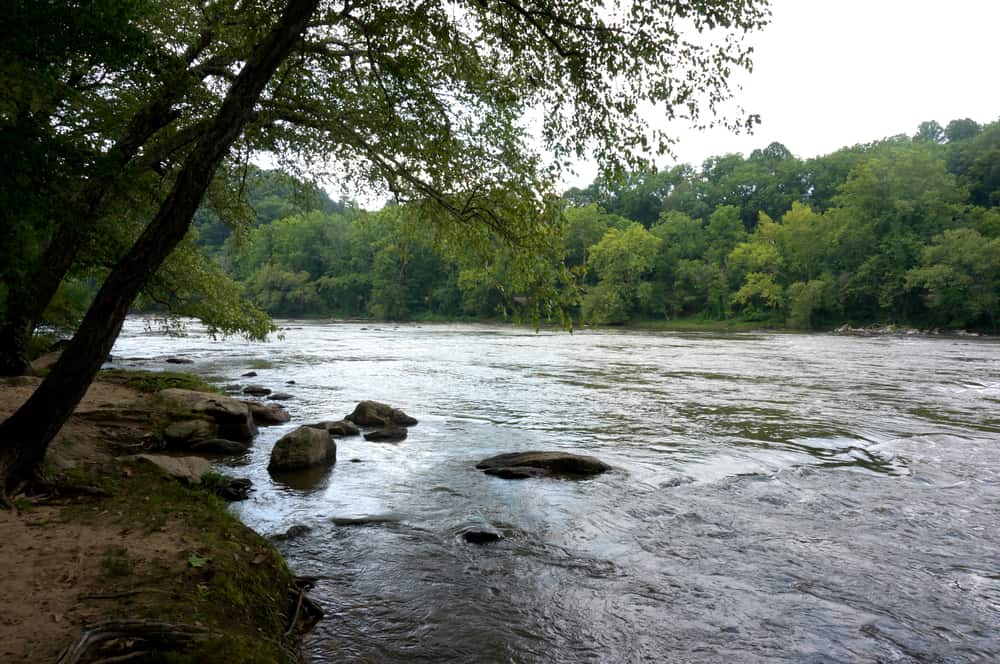 Source: Gingo Scott / shutterstock
Source: Gingo Scott / shutterstockFlowing at a gentle pace through Asheville from south to north, the French Broad River is thought by some to be the third oldest river on the planet.
Almost half of the river’s total length is an official paddle trail, and there’s a big choice of access points in and around Asheville, whether you’re kayaking, paddleboarding or tubing.
At the drop of a hat you can set off on your own self-guided trip, with the help of a roster of local adventure companies like French Broad Outfitters, The Outpost, Wai Mauna Asheville SUP Tours, and Asheville Adventure Co.
To mix nature with sightseeing you can start a little way south of the Biltmore Estate and see that magnificent house cresting over the treeline from the river.
If you like some adventure I suggest having a look at this French Broad Whitewater River Rafting Experience
9. Grove Arcade
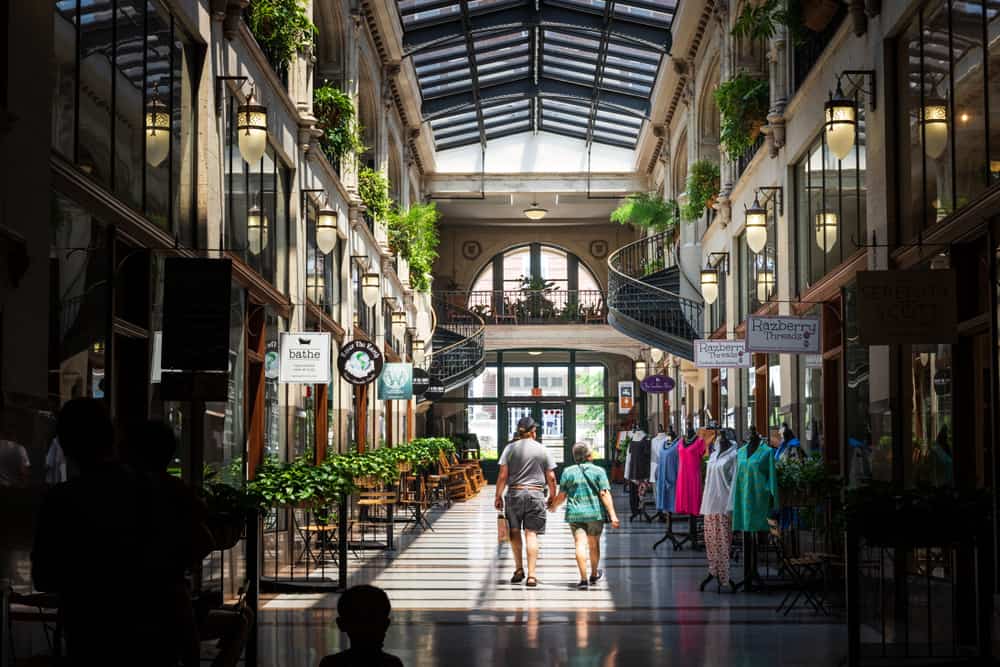 Source: Nolichuckyjake / shutterstock
Source: Nolichuckyjake / shutterstockOne of the first indoor shopping malls in America was built on a full city block in Asheville in the late 1920s. If you’re wondering about the peculiar profile of the Grove Arcade from the street on Battery Hill, this is actually the base for a skyscraper that was never constructed.
The architecture fits in well downtown, with Late Gothic stonework and a Parisian feel along the corridors, illuminated by skylights.
Since 2002 the building has become a tasteful lifestyle destination, with galleries, specialty shops and lots of enticing places to eat, many with seating on the sidewalks outside.
Off the Battery Park end you can see what catches your eye at the outdoor Makers Market, with a dozen stalls for artisans selling art, jewelry, local farm products and more.
10. Blue Ridge Parkway Visitor Center
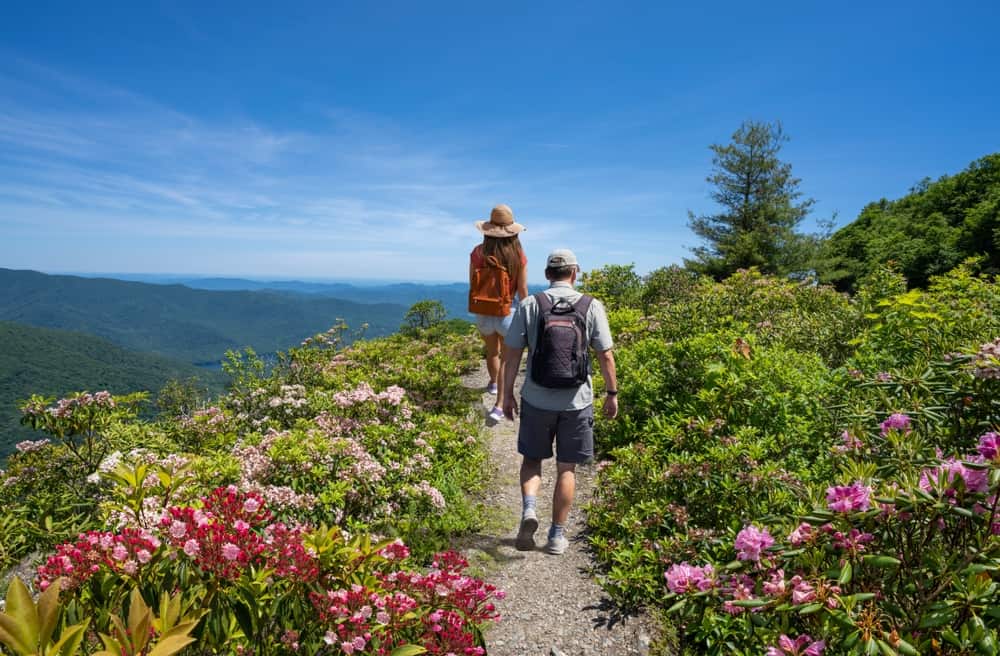 Source: Margaret.Wiktor / shutterstock
Source: Margaret.Wiktor / shutterstockAsheville shines on its own, but there are many reminders that the city can be a key component in long-distance adventures.
And it doesn’t get much longer than the Blue Ridge Parkway, which is the longest linear park in the United States at 469 miles.
No unit in the National Park System receives more visitors, and that isn’t too surprising given the awesome scenery along the spine of the Blue Ridge Mountains, where waterfalls and soaring peaks await you.
The headquarters and visitor center for the parkway are on the eastern edge of town, and this is the place to go to plot every detail of your journey and get excited about the things you can see and do along the way.
11. Craggy Gardens
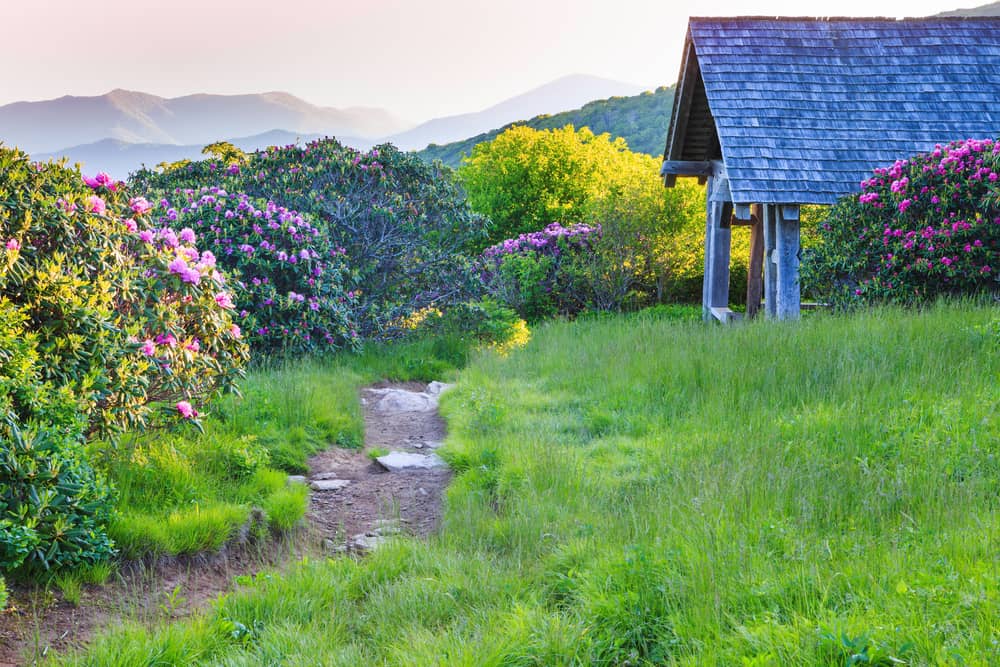 Source: Cvandyke / shutterstock
Source: Cvandyke / shutterstockAnother place you have to visit on the Blue Ridge Parkway is this set of natural summit meadows about 14 miles northeast of downtown.
Much higher than Asheville, Craggy Gardens are posted more than a mile above sea level, and the absence of tree cover at the highest points gives you epic panoramas like something from a fantasy movie.
The scenery is jaw-dropping at any time of year, but takes on an ethereal quality in June when the sea of pink and purple Catawba rhododendrons are in flower.
The hike of choice here is the Craggy Pinnacle Trail, leading through wind-sculpted hardwood forest with rare or endangered species up to a high overlook, with the peaks of Pisgah National Forest zigzagging for miles.
Temperatures here are up 20° cooler than downtown Asheville, so this is a great place to come for a little respite in summer.
12. Basilica of Saint Lawrence
 Source: Nagel Photography / shutterstock
Source: Nagel Photography / shutterstockThe Spanish building engineer, Rafael Guastavino (1842-1908), spent the last part of his career in Asheville, working on the Vanderbilt House, but also on this stately minor basilica downtown.
In the Spanish Renaissance style, the Basilica of Saint Lawrence was ready in 1909 and is one of Asheville’s great landmarks.
The most celebrated feature, and the reason you have to go inside, is the dome. This measures 58 feet x 82 feet, which makes it the largest freestanding elliptical dome in the country.
The highly detailed stained glass windows are also a delight, and there’s a wealth of statuary carved in Italy.
13. The Orange Peel
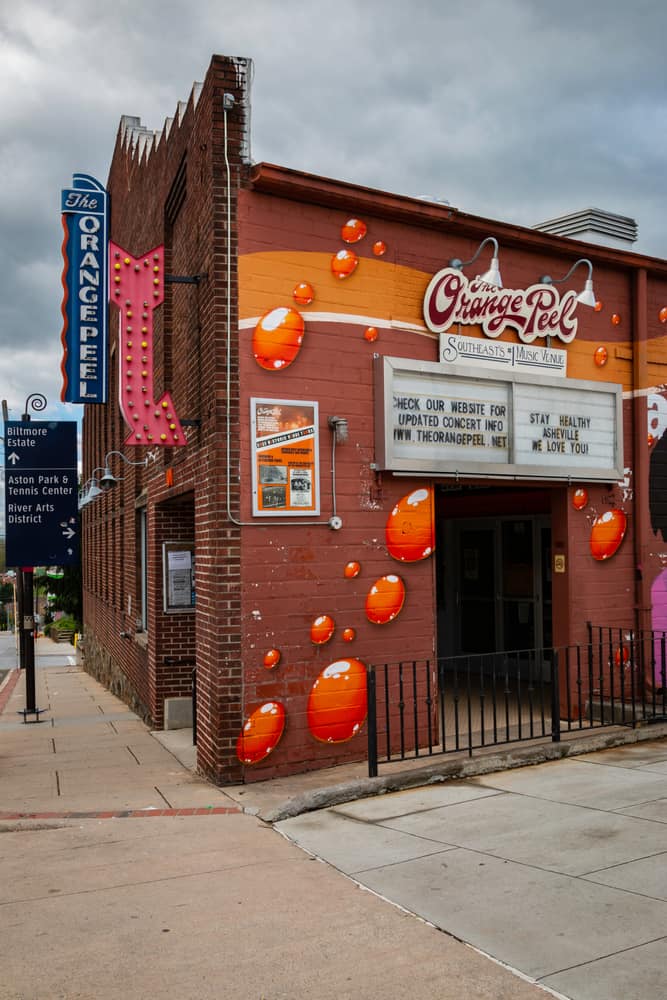 Source: Jeffery Edwards / shutterstock
Source: Jeffery Edwards / shutterstockOpened in 2002 during downtown Asheville’s transformation, The Orange Peel remains the pick of the city’s many live music venues.
The building dates back to 1950 and was a roller skating rink and then a nightclub where the likes of The Bar-Kays and The Commodores played. After a long abandonment, the Orange Peel has rebounded as the place to catch your favorite live act.
A few performers over the last 20+ years are Bob Dylan, Lauryn Hill, Sonic Youth, The Flaming Lips, Smashing Pumpkins, Queens of the Stone Age, and Kings of Leon.
The venue holds 1,100 and has been listed among the Top Five Rock Clubs in the Country” by Rolling Stone.
14. Woolworth Walk
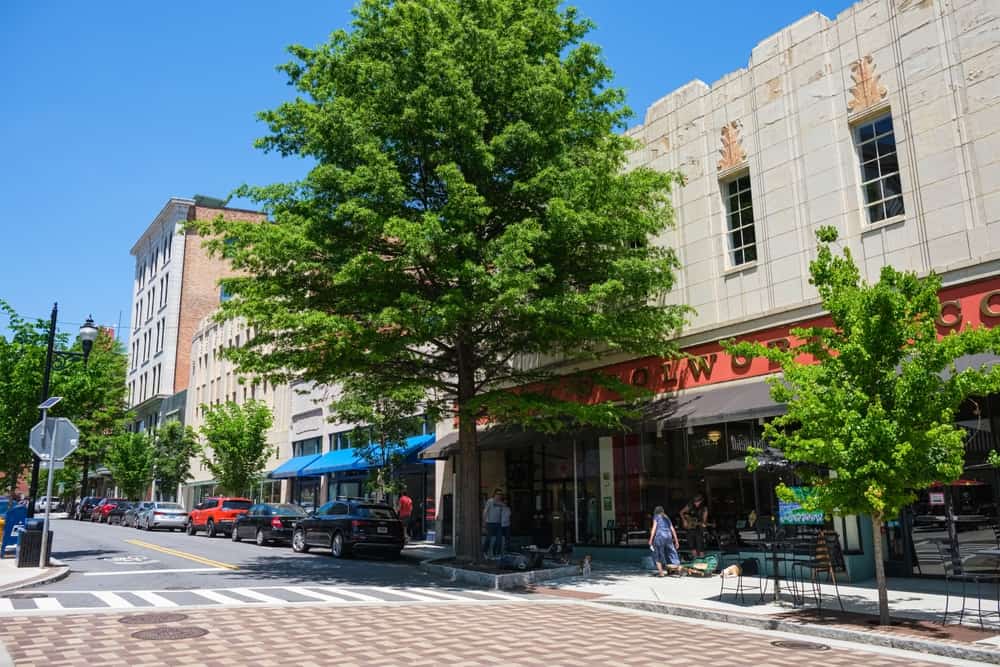 Source: Fotoluminate LLC / shutterstock
Source: Fotoluminate LLC / shutterstockHow much more Asheville can you get than an art gallery in a converted Art Deco department store?
Woolworth Walk is in a former Woolworth branch, built in 1938 and staying open until 1989. A lot happened here in that time, including sit-ins at the lunch counter during the Civil Rights movement.
The origins of the gallery go back to downtown’s revival in the early 00s, and the meticulous restoration work at that time earned the owners two Griffin Awards.
This is officially the largest gallery in the city, but what makes it such a destination is its focus on local artists.
There’s photography, painting, woodwork, pottery, glass, digital art, metal work, and more, along with an old-school soda fountain, in full working order.
15. Western North Carolina Nature Center
 Source: wildwnc.org
Source: wildwnc.orgA zoo with a sense of place, the Western North Carolina Nature Center shows off the wildlife of the Southern Appalachian Mountain region.
This attraction goes back decades, but has made some big changes since the late 1990s, focusing on regional species and designing a variety of award-winning habitats as part of a long-term masterplan.
Local faces include American river otters, turkey vultures, great horned owls, gray foxes, cougars, eastern mud turtles, American red wolves, and black bears.
These are a few of the 60+ species at the center, matched with interesting natural history facts, and set on winding wooded trails by the Swannanoa River. All through the park, restless kids can stretch their legs at a series of play stations.
16. Asheville Art Museum
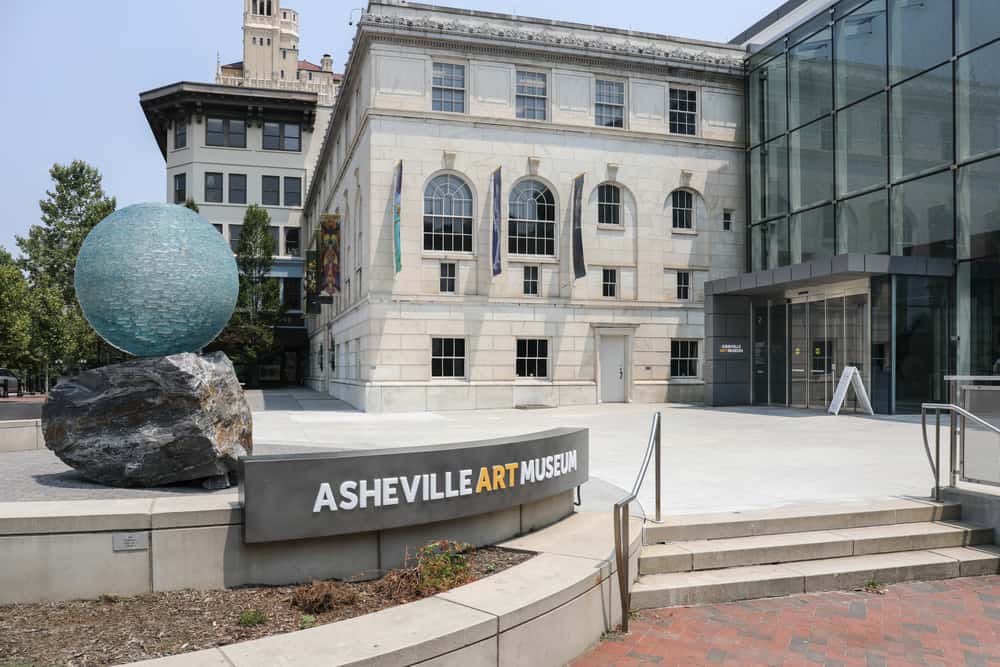 Source: Nolichuckyjake / shutterstock
Source: Nolichuckyjake / shutterstockAt Pack Place downtown, the Asheville Art Museum reopened in 2019 after a $24 million expansion and renovation project.
There are up to 20 important exhibitions in these galleries every year, and one of the great things about the expansion is that the museum can now receive major traveling exhibitions from the country’s top institutions.
The permanent collection specializes in American art from the 20th and 21st century, but is also steeped in the traditions and eclectic cultures of Western North Carolina and Southern Appalachia.
There’s a rooftop sculpture terrace over Pack Square, with the Blue Mountains in the distance, while the first thing you’ll see when you arrive is Henry Richardson’s Reflections on Unity, a two-ton glass sphere at the entrance.
17. Gray Line Trolley Tours
 Source: Nolichuckyjake / shutterstock
Source: Nolichuckyjake / shutterstockA good first port of call in Asheville is the Visitor Center, which has an information desk, brochures and a store stocked with goodies from across Western North Carolina.
This is also the departure point for Gray Line’s hop-on, hop-off trolley tours around the city. Setting off every half an hour, these trips last 90 minutes and wrap up many of Asheville’s highlights in a neat package, with a lot of riveting anecdotes on the way.
You’ll see downtown’s Art Deco wonders, the River Arts District, the famed Omni Grove Park Inn, and the stately residences of the Montford Area Historic District, with more than 600 buildings from the turn of the 20th century. If you’re in town for 2 days I suggest getting 2-Day Pass.
18. Grovewood Village
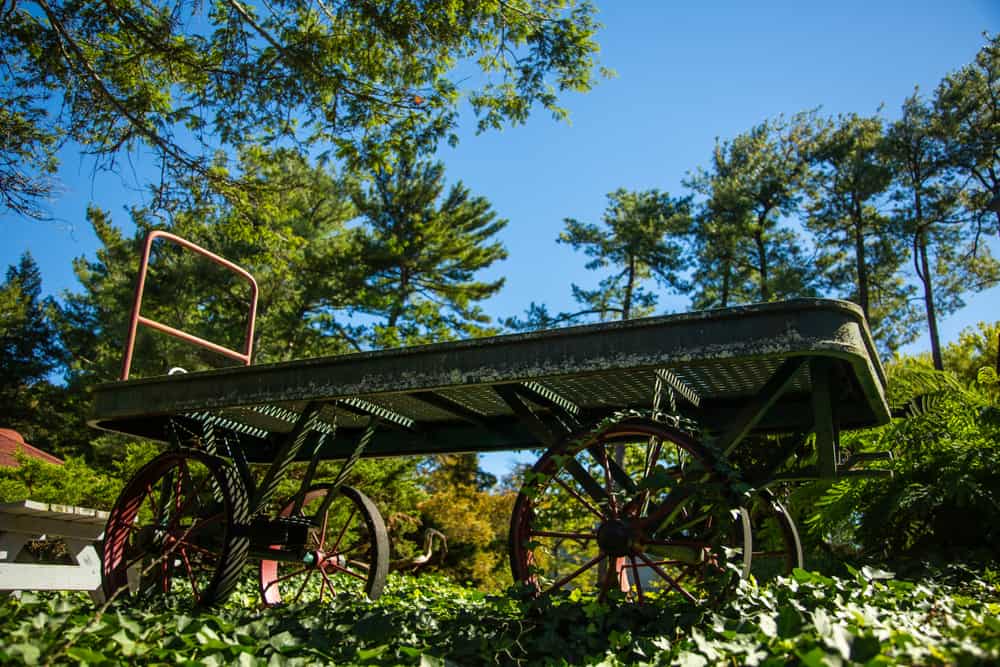 Source: Bob Pool / shutterstock
Source: Bob Pool / shutterstockThis historic campus next to Omni Grove Park Inn once housed Biltmore Industries’ woodworking and weaving operations, producing crafts and textiles of the finest quality.
That tradition continues into the 21st century, as the picturesque complex has been revived as an arts and crafts hub. Grovewood Village has working artist studios, home to specialists in anything from ceramic art to metalwork.
You can shop for exceptional crafts at the gallery, see these skills in practice at the studios, and find out about the village’s craft heritage on a guided history tour.
Also take time to explore the Biltmore Industries Homespun Museum, and the Estes-Winn Antique Car Museum, with a set of gleaming vintage cars in the old weaving shop.
19. McCormick Field
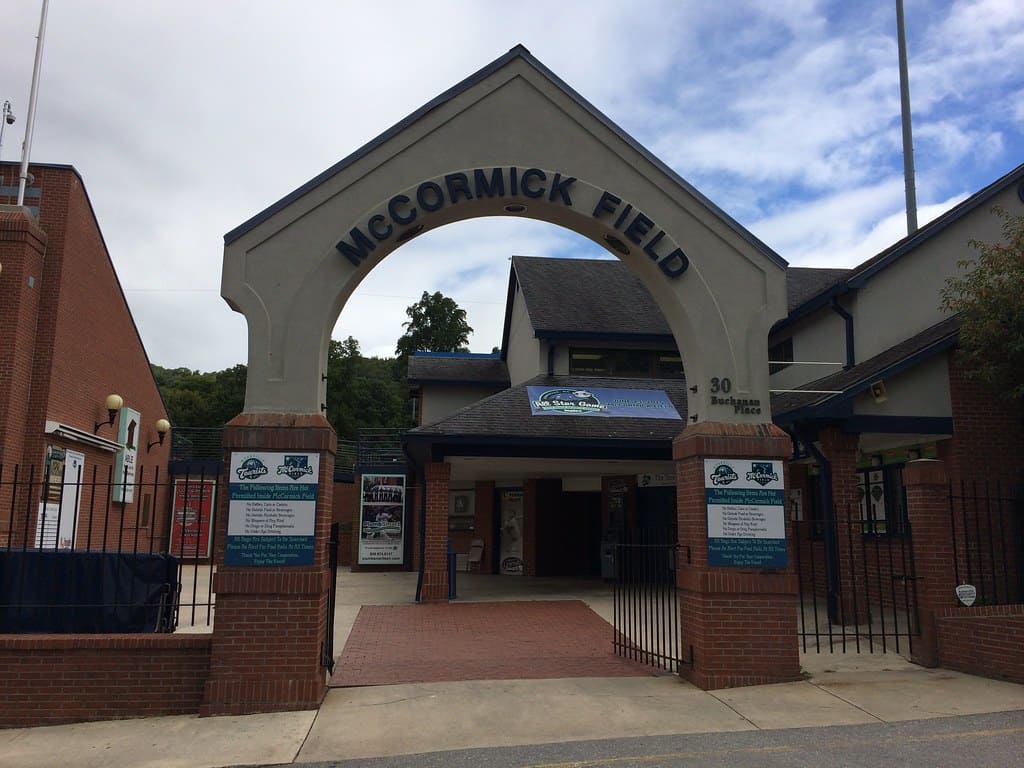 Source: MikeKalasnik / Flickr | CC BY-SA
Source: MikeKalasnik / Flickr | CC BY-SAIf you love quirky old ballparks, the 4,000-capacity home of MiLB’s Asheville Tourists is a treat. McCormick Field is one of the oldest minor league stadiums still in use, and has a setting that is typical Asheville, resting on a small plateau halfway up a wooded hillside.
The stadium has been here since 1923, and was being updated when we wrote this article. The Tourists meanwhile date right back to 1897, and have bounced around a long list of classes and leagues since then. When we went to press they were the High-A affiliate for the Houston Astros.
Here as much as anywhere else, food and drink are part of the experience, and there’s a good choice of vegetarian options, local craft beers, and specials on hot dogs on Fridays.
20. Fine Arts Theatre
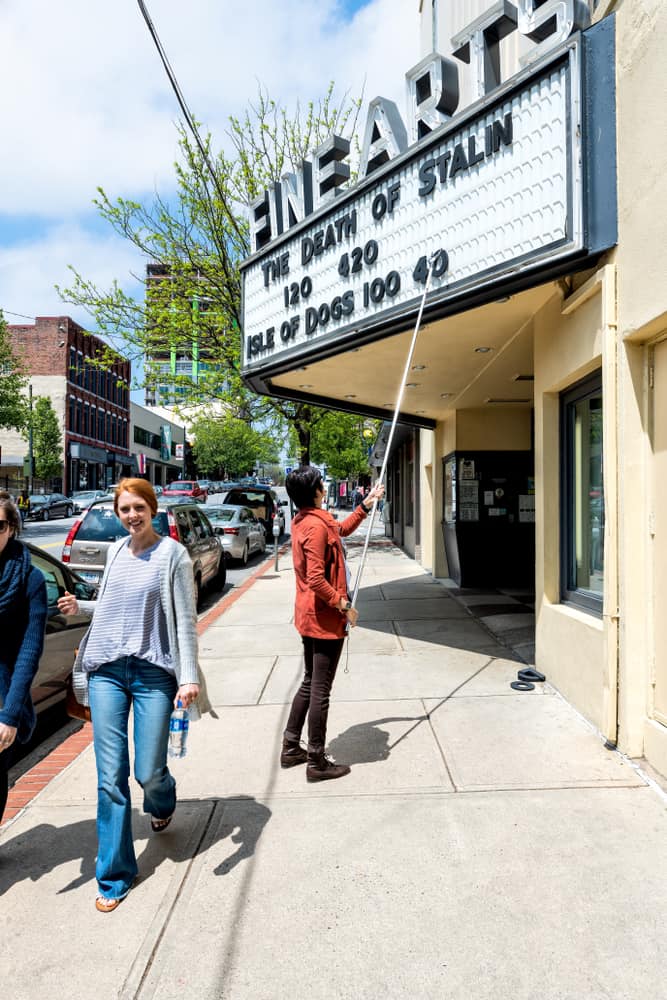 Source: Andriy Blokhin / shutterstock
Source: Andriy Blokhin / shutterstockIn downtown’s contingent of sleek Art Deco buildings there’s a movie theater that opened in 1946. With an understated cream facade featuring a stepped gable and two narrow strips of block glass, this spot opened in 1946 and was originally the Strand Theatre.
Since then a second screen has opened on the former balcony, and both auditoriums went digital in 2012. The Fine Arts Theatre is the only operating movie theater downtown, and is devoted to independent, foreign and classic movies.
Both screens have working curtains, which may come as a shock to younger audiences, while this is one of those rare theaters where you can sip on a glass of wine or beer as you watch.
21. Asheville Community Theatre (ACT)
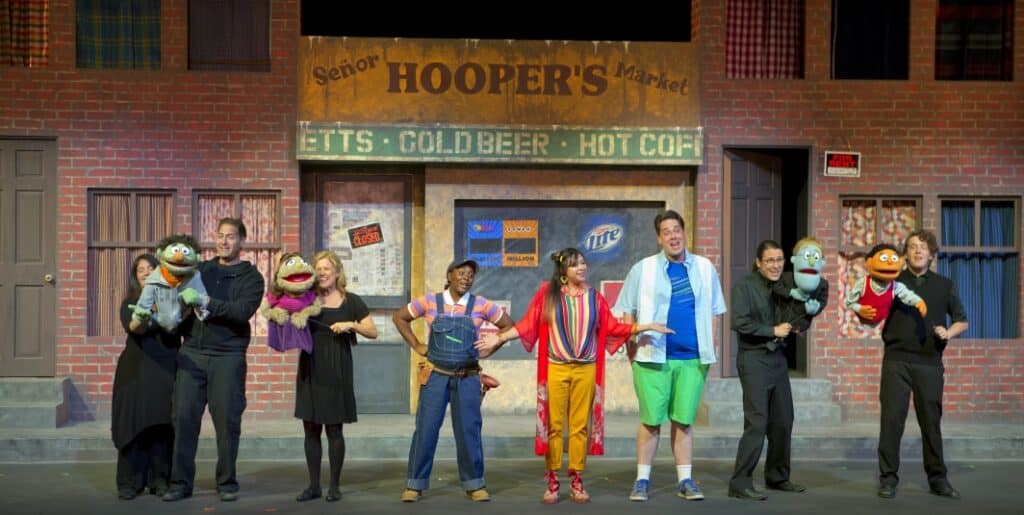 Source: ashevilletheatre.org
Source: ashevilletheatre.orgWe know what you’re thinking. But, rest assured, the Asheville Community Theatre is no ordinary community theatre. Founded in 1946, this is one of the oldest still operating in the United States.
More than that, the legendary actor Charlton Heston and his wife Lydia Clarke were in charge for a season in 1947. It was here that Clarke decided to get into acting full time, while Heston’s career in Broadway started soon after.
It’s easy to be swept along by these shows, because everything is on point, from the performances to costume, direction and sets. The mainstage auditorium downtown is named for Heston, with all-volunteer shows for all tastes throughout the season.
22. Appalachian Trail
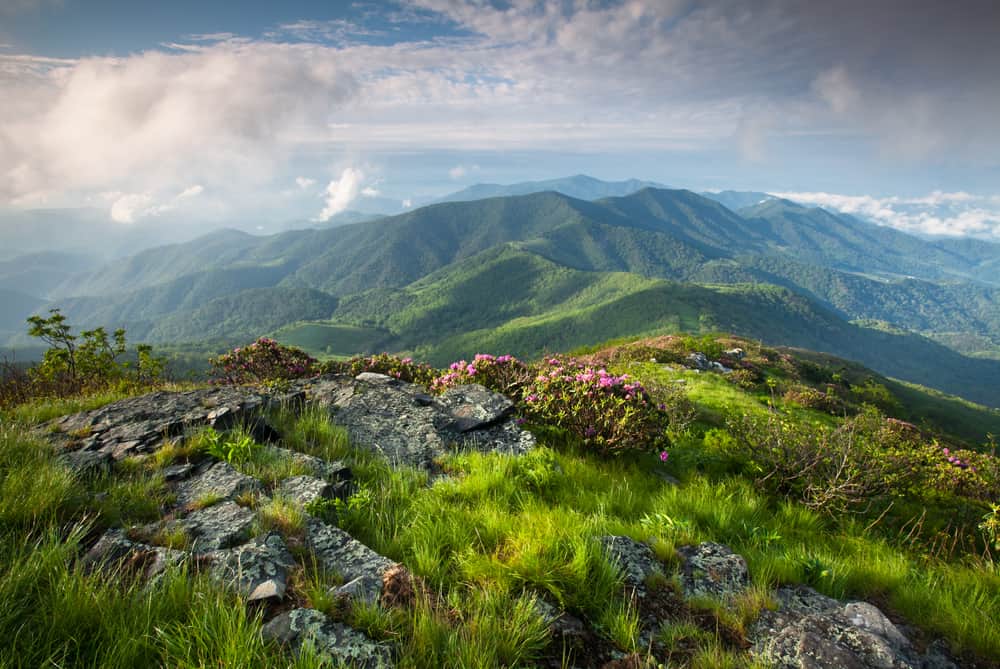 Source: MarkVanDykePhotography / shutterstock
Source: MarkVanDykePhotography / shutterstockThe trail to end all trails passes close to Asheville, along the North Carolina/Tennessee border. On its 2,200-mile path from Springer Mountain, GA, to Mount Katahdin, ME, the trail cuts through the scenic town of Hot Springs, about 30 miles north of Asheville.
This is a good on-ramp for a day hike, for a shorter out-and-back adventure for a taste of what those hardy thru-hikers have to endure.
Within a mile you’ll get to a breathtaking lookout at Lovers Leap. Another stunning location within reach of Asheville is Max Patch, a bald mountain summit, freckled with wildflowers, and with views that scroll out for miles in all directions.
23. Barley’s Taproom
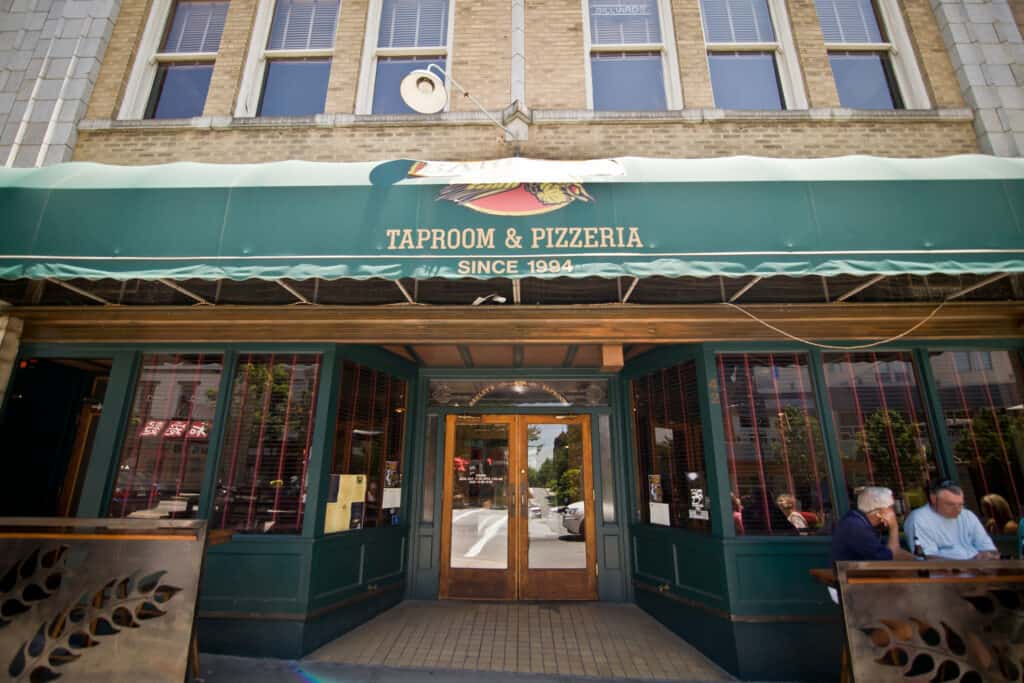 Source: www.barleystaproom.com
Source: www.barleystaproom.comIf you’re into craft beer I highly recommend a visit to Barley’s Taproom. Asheville has a craft beer scene to be reckoned with, and it was spearheaded by this local icon on Biltmore Avenue downtown.
Barley’s Taproom opened in 1994, in a converted appliance store from the 1920s. With the taproom came Highland Brewing, which operated in the basement as the first brewery in Asheville since Prohibition and has since moved to larger premises.
You can try Highland’s signatures, Oatmeal Porter and Gaelic Ale, which are poured along with dozens of other local and regional craft beers.
There are 28 taps in the main bar, another 28 upstairs, along with a billiards room, and a food menu dominated by Barley’s famous sourdough pizza.
24. Botanical Gardens at Asheville
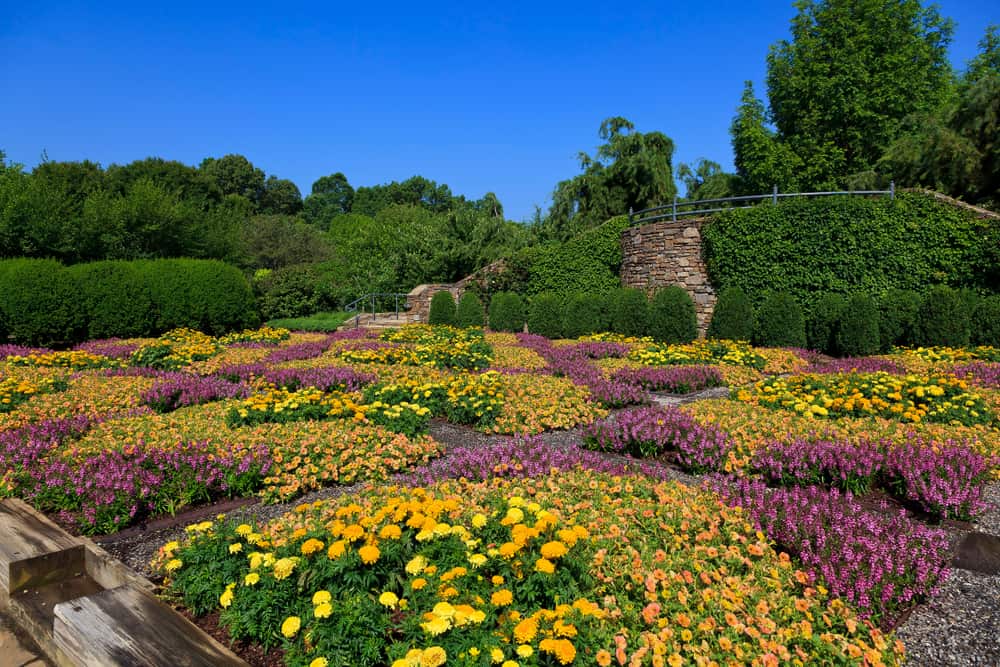 Source: Jill Lang / shutterstock
Source: Jill Lang / shutterstockYou don’t need to stride out onto the Appalachian Trail to see the region’s rich flora. There’s a more manageable showcase by the University of North Carolina at Asheville campus, a mile or so north of downtown.
Free to enter, the Botanical Gardens at Asheville present the plants and habitats of the Southern Appalachians, and were planted on ten acres of abandoned timberland in the early 1960s.
There are more than 650 species of trees, grasses, herbs, ferns, and wildflowers growing here, a proportion of which are seldom found in the wild. Although there’s color to be found at any time of year, the gardens are a joy during wildflower season in spring.
25. Festivals
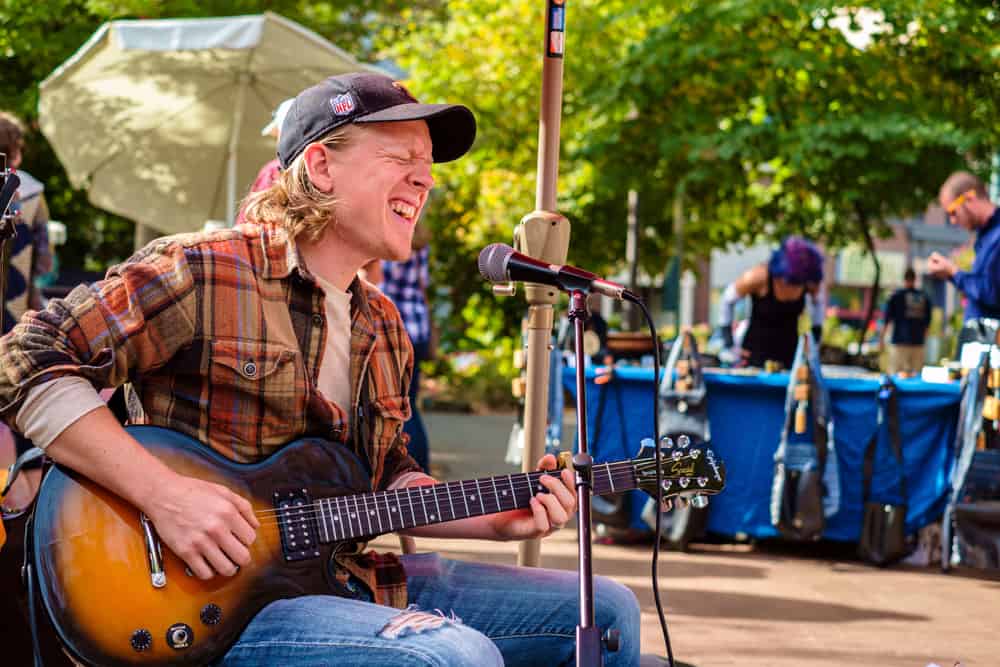 Source: Fotoluminate LLC / shutterstock
Source: Fotoluminate LLC / shutterstockIf there’s a city that knows how to have fun it’s Asheville, where there’s something going on all year round, and often with an artsy twist.
Take the Craft Fair of the Southern Highlands in July, when close to 200 artists and crafters from the region descend on Asheville. You’ve got a weekly dose of free mountain music at Pack Square Park for Shindig on the Green all through July.
Then in August AVL Fest is a four-day medley of music and art, filling a host of venues around the city. Fall means Blue Ridge Pride, and Asheville Art in the Park, when Pack Square Park becomes a giant art fair on consecutive Saturdays in October.
The Biltmore Estate welcomes its fair share of action, with heartwarming displays in the holiday season, and 130,000+ flowers for Biltmore Blooms in spring.
You may also like some of the other posts I wrote on Asheville and North Carolina:
